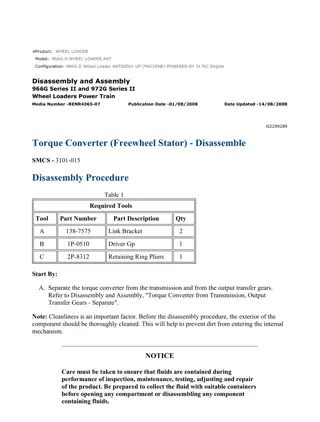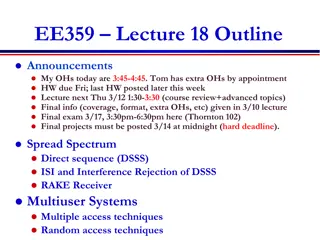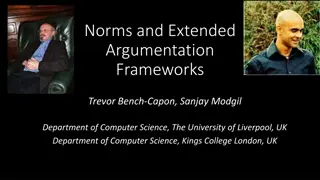
Java Development: Testing with JUnit and Ant
Learn how to effectively test Java programs using JUnit and Ant for automated testing. Explore the integration of Eclipse, creating test cases, and utilizing assertion methods for comprehensive testing coverage.
Download Presentation

Please find below an Image/Link to download the presentation.
The content on the website is provided AS IS for your information and personal use only. It may not be sold, licensed, or shared on other websites without obtaining consent from the author. If you encounter any issues during the download, it is possible that the publisher has removed the file from their server.
You are allowed to download the files provided on this website for personal or commercial use, subject to the condition that they are used lawfully. All files are the property of their respective owners.
The content on the website is provided AS IS for your information and personal use only. It may not be sold, licensed, or shared on other websites without obtaining consent from the author.
E N D
Presentation Transcript
Software Development Tools COMP220 Seb Coope Ant, Testing and JUnit (1) These slides are mainly based on Java Development with Ant - E. Hatcher & S.Loughran. Manning Publications, 2003 and JUnit in Action , 2nd edition P. Tahchiev, F. Leme, V. Massol, G. Gregory, Manning Publications, 2011
Testing with JUnit and ANT "Any program without an automated test simply doesn't exist." (Extreme Programming Explained, Kent Beck) Software bugs have enormous costs : time, money, frustration, and even lives. Creating and continuously executing test cases is a practical and common approach to address software bugs. The JUnit testing framework is now the de facto standard unit testing API for Java development. 2
Testing with JUnit and ANT You know that Eclipseintegrates with Junit. Ant also integrates with Junit. This allows: executing tests as part of the build process, capturing their output, and generating rich colour enhanced reports on testing. The following several lectures on Ant is eventually aimed to show how to use JUnit from Ant for testing. But we will start with JUnit Primer. 3
JUnit primer (independent of Eclipse and Ant) JUnit is an API that enables developers to easily create Java test cases. It provides a comprehensive assertion facility to verify expected versus actual results. 4
Writing a test case (simplified version) Let us create a simple JUnit test case, e.g. SimpleTest.java, (a special version of Java class). Follow three simple steps: 1. Import the necessary JUnit classes (see Slide 7) such as import static org.junit.Assert.*; import org.junit.Test; 2. Implement one or more no-argument voidmethods testXXX() prefixed by the wordtest and annotated as @Test 3. Implement these @Test methods by using assertion methods Compare these steps with the example inthe next Slide 5
An example of SimpleTesttest case: Create the following file under C:\Antbook\ch04\test directory. C:\Antbook\ch04\test\org\example\antbook\junit\ SimpleTest.java: Any your package packageorg.example.antbook.junit; //import required JUnit4 classes: import static org.junit.Assert.*; import org.junit.Test; 1. Import JUnit classes public class SimpleTest { @Test public voidtestSomething() { assertTrue("MULTIPLICATION???", 4 == (2 * 2)); } } 2. Implement a @Test annotated void testXXX() method Use assertion methods (to be further discussed later). 3. 6
Imported JUnit Classes Find the imported classes org.junit.Assert and org.junit.Testin C:\JAVA\junit4.8.2\junit-4.8.2.jarand C:\JAVA\junit4.8.2\junit-4.8.2-src.jar.) by using commands jar tf junit-4.8.2.jar or jar tf junit-4.8.2-src.jar, or by usingWinZip (with renaming the extension .jar by .zip; before renaming, copy these JAR files into some other directory!) 7
Running a test case How to run a test case such asSimpleTest? (Recall, this was very easy in Eclipse!) Note that SimpleTest does not contain main method! So, it cannot be run in itself. Junit 4 provides us with Test RunnerJava classes used to execute all @Test methods testXXX() Prefixing these method names by the word test is unnecessary, but it is a good tradition. Test Runners will run only methods annotated as @Test,irrespectively how the methods are named. See Slides 19,20 below on other possible JUnit annotations. 8
Running a test case JUnit 4 provides different runners for running old style Junit 3.8 tests, new style JUnit 4 tests, and for different kinds of tests. The JUnitCore facade (which we will actually use) org.junit.runner.JUnitCore operates instead of any test runner. It determines which runner to use for running your tests. It supports running JUnit 3.8 tests, JUnit 4 tests, and mixture of both. See also http://junit.sourceforge.net/javadoc/ 9
Running a test case (cont.) JUnitCoreTest Runner expects a name of a Test Case class as argument. Then all the methods annotated as @Test of this subclass (typically having the name like testXXX()) and having no arguments are running. Methods notannotated by @Test will not run! Test Runner prints a trace of dots ( ..) at the console as the tests testXXX() are executed followed by a summary at the end. 10
Running a test case (cont.) Compiling our SimpleTest.javatest case to directory build\test (create it yourselves), and then running the JUnitCoreTest Runner from the command line, with SimpleTest.class as argument goes as follows: Compiling destination C:\Antbook\ch04>javac -d build\test test\org\example\antbook\junit\SimpleTest.java what to compile C:\Antbook\ch04>java -cpbuild\test;C:\JAVA\junit4.8.2\junit-4.8.2.jar org.junit.runner.JUnitCore org.example.antbook.junit.SimpleTest JUnit version 4.8.2 . Time: 0.01 OK (1 test) The dot character (.) indicates one @Test methodtestXXX() being run successfully. In this example only one @Test method exists, testSomething. TRY this with several testXXX() methods (annotated as @Testor not) or with several assertTrue. How many dots will you see? 11
Running a test case (-classpath) C:\Antbook\ch04>javac -d build\test test\org\example\antbook\junit\SimpleTest.java C:\Antbook\ch04>java -cpbuild\test;C:\JAVA\junit4.8.2\junit-4.8.2.jar org.junit.runner.JUnitCore org.example.antbook.junit.SimpleTest JUnit version 4.8.2 . Time: 0 OK (1 test) -cp (-classpath)overrides systemCLASSPATHenvironment variable! That is why, besides the location build\test oforg.example.antbook.junit.SimpleTest, the path C:\JAVA\junit4.8.2\junit-4.8.2.jar to JUnit JAR file containingJUnitCore (which will runSimpleTest) is also necessary (even if it was in CLASSPATH). 12
Directory Structure in ch04 The directory structure in ch04is as follows: C:\Antbook\ch04- base directory (basedir=".") C:\Antbook\ch04\src- source directory (${src.dir}) C:\Antbook\ch04\test- test directory (${src.test.dir}) containing (deeper) JUnit test classes C:\Antbook\ch04\build- build directory (${build.dir}) C:\Antbook\ch04\build\classes - for compiled source files (${build.classes.dir}) C:\Antbook\ch04\build\test - for compiled JUnit classes (${build.test.dir}; to be considered later). Red coloured (underlined) directories and their content should be created by yourself. Other highlighted directories build\classes and \build\test will be created automatically by your Antbuild file. 13
Invoking Test Runnerfrom build file with<java> task It is more convenient to apply Test Runner JUnitCore to SimpleTest fromAnt build file mybuild.xml (in C:\Antbook\ch04)containing build\test for compiledtest cases. Should also be created in mybuild.xml by some target test-init! <pathid="test.classpath"> <pathelementlocation="${build.test.dir}"/> <!-- More path elements? Add yourself! --> </path> This target is also required before running SimpleTest! Which else? <target name="junit-TestRunner" depends="test-compile"> <javaclassname="org.junit.runner.JUnitCore" classpathref="test.classpath"> Test Runner Class path. It may also be required in target test-compile! We will see! <arg value="org.example.antbook.junit.SimpleTest"/> </java> </target> Test Case to run We name the target as junit-TestRunnerbecause it imitates command-line execution of Test RunnerJUnitCorewith the argumentSimpleTest: ch04>java -cp build\test;C:\JAVA\junit4.8.2\junit-4.8.2.jar org.junit.runner.JUnitCore org.example.antbook.junit.SimpleTest See Slides 11,12 14
Invoking Test Runnerfrom build file with<java> task in the Lab Continue working yourselves on mybuild.xml in C:\Antbook\ch04 Set additional essential properties in mybuild.xml for all required directories (like src, test, build\classes, build\test, etc). See Slide 13. Use always these properties in mybuild.xml instead of usual directory names. This is a good practice. To avoid usual misprints, copy-and-paste long property names. Create other necessary targets (using templates from old files) test-init,test-compile, clean, etc. Complete definitions of the path with id="test.classpath", if required, Check carefully all therelevantdetails inmybuild.xml, and RUN the above target junit-TestRunner with preliminarycleaning build directory: 15
InvokingTestRunner from build file with<java> After completing definition of the path with id="test.classpath": C:\Antbook\ch04>ant -f mybuild.xml clean junit-TestRunner Buildfile: C:\Antbook\ch04\mybuild.xml [echo] Building Testing Examples clean: [delete] Deleting directory C:\Antbook\ch04\build init: [mkdir] Created dir: C:\Antbook\ch04\build\classes compile: Currently no Java files in src. Nothing to compile. test-init: [mkdir] Created dir: C:\Antbook\ch04\build\test test-compile: [javac] Compiling 1 source file to C:\Antbook\ch04\build\test There is currently 1 test file SimpleTest.java in ch04\testcompiled to ch04\build\test junit-TestRunner: [java] JUnit version 4.8.2 [java] . [java] Time: 0.016 [java] [java] OK (1 test) [java] [java] Java Result: 1 BUILD SUCCESSFUL Total time: 2 seconds Ignore 16
Asserting desired results The mechanism by which JUnit determines the success or failure of a test is via assertion statements like assertTrue(4 == (2 * 2)) Otherassert methods simply compare between expected value and actual value, and generate appropriate messages helping us to find out why a method does not pass the test. These expected and actual values can have any of the types: any primitive datatype, java.lang.String, java.lang.Object. For each type there are twovariants of the assert methods, each with the signatures like assertEquals(expected, actual) assertEquals(String message, expected, actual) The second signature for each datatype allows a message to be inserted into the results of testing in case of failure. It can help to identify which assertion failed. 17
Some JUnit Assert Statements based onhttp://www.vogella.de/articles/JUnit/article.html Statement Description assertTrue([String message], boolean condition) assertEquals([String message], expected, actual) Check if the boolean condition is true. Test if the values are equal: expected.equals(actual) Note: for arrays the reference is checked not the content of the arrays Asserts the equality of two arrays (of their lengths and elements) Usage for float and double; the tolerance is the maximal allowed difference between expected and actual. Check if both variables refer to the same object expected == actual Check that both variables refer not to the same object. Checks if the object is null assertArrayEquals([String message], expected, actual) assertEquals([String message], expected, actual, tolerance) assertSame([String], expected, actual) assertNotSame([String], expected, actual) assertNull([message], object) assertNotNull([message], object) Check if the object is not null. fail([message]) Lets the test method fail; might be usable to check that a certain part of the code is not reached. 18
Some Junit4 Annotations based onhttp://www.vogella.de/articles/JUnit/article.html Description Annotation @Test public void method() See also Slides 5,6 above. @Before public void method() See also Slides 4-6 inpart 12. Ant and JUnit. of these lectures. Annotation @Test identifies that this method is a test method. Will perform the method() before each test. This method can prepare the test environment, e.g. read input data, initialize the class) This method() is usually called setUp(). This method() must start after each @Test method This method() is usually called tearDown(). Will perform the method before the start of all tests. This can be used to perform time intensive activities for example be used to connect to a database @After public void method() See slides as above. @BeforeClass public void method() @AfterClass public void method() Will perform the method after all tests have finished. This can be used to perform clean-up activities for example be used to disconnect to a database Will ignore the test method. E.g. useful if the underlying code has been changed and the test has not yet been adapted or if the runtime of this test is just too long to be included. Console will show I instead of dot . . @Ignore @Test(expected=IllegalArgumentException.class)Tests if the method throws the named exception @Test(timeout=100) Fails if the method takes longer then 100 milliseconds 19
Some Junit4 Annotations Annotation Description Annotation @RunWith of a test class declaration says which Test Runner (here org.junit.runners.Suite.class) should be used by JUnitCore facade to run this test class. See Junit in Action 2nd Ed., pages 21-23 and also Slides 9, 10 in Part 12. Ant and JUnit. of these lectures. Annotation @SuiteClasses is used to create a Suite of Tests Classes(or Suite of Suites). Here, the Suite created is called AllTests. The above annotation @RunWith(value=Suite.class) should be also used here before @SuiteClasses. See Junit in Action 2nd Ed., pages 21-23 and also Slides 9, 10 in Part 12. Ant and JUnit. of these lectures. Annotation @Parameters is used to create a Collection of arrays of parameters so that a test can be applied to each of this parameter array. Arrays must be of identical length to be substitutable for variables used in the test. The class of such a ParametrizedTest should be annotated as @RunWith(value=Parametrized.class). More details in Junit in Action 2nd Ed., pages 17-19. @RunWith(value=Suite.class) @SuiteClasses( value={FirstTest.class, SecondTest.class,...} ) Public class AllTests{} @Parameters Details and examples of @Parameters not considered in these lectures 20
Failure or error? JUnit uses the term failure for a test that fails expectedly, meaning that an assertion (like those above) was not valid or a fail() was encountered. We expect these failures and therefore set up these assertions. The term error refers to an unexpected error (such as a NullPointerException or the like). 21
Running in Ant JUnittest case for Persistence Proj. FilePersistenceServices.java C:\Antbook\ch04 Recall that while working on Eclipse and JUnit the class FilePersistenceServices.java for writing and reading a data to/from a file was partly implemented and tested by JUnit test case FilePersistenceServicesTest.java Both classes declared jointpackage (in your case yourpersonal) package org.eclipseguide.persistence; Let us copy them from your Eclipse workspace, respectively, to: C:\Antbook\ch04\src\ org\eclipseguide\persistence\FilePersistenceServices.java and C:\Antbook\ch04\test\ org\eclipseguide\persistence\FilePersistenceServicesTest.java You should use as complete as possible versions of these files created in lectures and your Labs! 22
Recalling FilePersistenceServices.java and FilePersistenceServicesTest.java C:\Antbook\ch04\src\ org\eclipseguide\persistence\FilePersistenceServices.java We omitted the most of the details of this file, except red colouredpackage declaration and method names. Please, recall what they were intended to do. packageorg.eclipseguide.persistence; import java.util.StringTokenizer; import java.util.Vector; public class FilePersistenceServices { public static boolean write(String fileName, int key, Vector<String> v) { return false; // false: not yet implemented } public static Vector<String> read (String fileName, int key) { return null; // null: just to return anything (not yet implemented) } But you should use the complete version of this file! Continued on the next slides... 23
Continuation public static String vector2String(Vector<String> v, int key) { return null; // null: just to return anything (not yet implemented) } public static Vector<String> string2Vector(String s) { return null; // null: just to return anything (not yet implemented) } public static int getKey(String s) { return -1; // -1: just to return anything (not yet implemented) // should return key, a positive integer; } } End of file You should use the complete versions of these three methods! In the real file, methods vector2String, string2Vector and getKey were fully implemented in the Labs and returned something more meaningful than null. If you implemented these three methods correctly, theyeven should pass our tests! 24
C:\Antbook\ch04\test\org\eclipseguide\persistence\ FilePersistenceServicesTest.java package org.eclipseguide.persistence; // Junit4 packages: import static org.junit.Assert.*; import org.junit.After; import org.junit.Before; import org.junit.Test; Read and do this yourself in the lab JUnit test case for testing FilePersistenceServices.java import java.util.Vector; public class FilePersistenceServicesTest { Vector<String> v1; String s1 = "\"1\",\"One\",\"Two\",\"Three\""; @Before //Runs before each @Test method public void setUp() throws Exception // set up fixture v1 { v1 = new Vector<String>(); v1.addElement("One"); v1.addElement("Two"); v1.addElement("Three"); } @After //Runs after each @Test method public void tearDown() throws Exception { v1 = null; } // release v1 Setting up the fixture v1 Releasing the fixture (continued on the next slide) 25
Read and do this yourself in the lab @Test Test method public void testWrite() { // fail("Not yet implemented"); assertTrue("NOT WRITTEN???", } @Test public void testRead() { // fail("Not yet implemented"); FilePersistenceServices.write("TestTable", 1, v1); Vector<String> w = FilePersistenceServices.read("TestTable", 1); // assertNotNull("NULL OBTAINED???", w); assertEquals(v1, w); } @Test public void testVector2String() { assertEquals(s1, FilePersistenceServices.vector2String(v1, 1)); } @Test public void testString2Vector() { assertEquals(v1, FilePersistenceServices.string2Vector(s1)); } @Test public void testGetKey() { assertEquals(1, FilePersistenceServices.getKey(s1)); } } 1 is expected actual FilePersistenceServices.write("TestTable", 1, v1)); Test method Correction: this line commented Test method Test method Test method 26 Enf of file
Comments Running the unit test FilePersistenceServicesTest now should evidently fail on its test methods read() and write() which are still wrongly implemented, until we provide correct implementation of all the tested methods. We are omitting the implementation details of read() and write() as this is beyond the scope of the testing tools. However, this is, of course, in the scope of the testing practice for which we have insufficient time in this module COMP220 (although we had some such a practice while working with Eclipse). NOW, COMPILE and then RUN FilePersistenceServicesTest by using JUnitTest Runner fromAnt's build file mybuild.xmlappropriately extended. 27
Extending<pathid="test.classpath> Now, after above copying, we have twomore classes, one in src, and another in test directories. Let us add new argument FilePersistenceServicesTestto <java> in target unit-TestRunner and repeat the command ant -f mybuild.xml clean junit-TestRunner from Slide 16 above. test-compile: [javac] Compiling 2 source files to C:\Antbook\ch04\build\test [javac] C:\Antbook\ch04\test\org\eclipseguide\persistence\FilePersistenceSer vicesTest.java:63: cannot find symbol [javac] symbol : variable FilePersistenceServices Added line Note that BUILD FAILED since compiling does not work for new files now. Why? (In particular unit-TestRunner will not start.) It looks like the compiler requires(!?) and does not know where to find FilePersistenceServices.class Hence, we should further extend<pathid="test.classpath> from Slide 14. HOW? DO IT to have the build success. 28
For Lab: Solution to the previous slide Extend in mybuild.xml both <pathid="test.classpath"> element and target test-compile as follows: <pathid="test.classpath"> <pathelement location="${build.test.dir}"/> <!-- build/test --> <pathelement location="C:\JAVA\junit4.8.2\junit-4.8.2.jar"/> <pathelement location="${build.classes.dir}"/> <!-- build/classes: here is the required class! --> </path> This target test-compile is also required. (Which else?) New path element <target name="test-compile" depends="compile,test-init"> <javac includeAntRuntime="false" srcdir="${src.test.dir}" destdir="${build.test.dir}" classpathref="test.classpath"> </javac> </target> Addingclasspathref="test.classpath"is required for compiling FilePersistenceServicesTest.java because the latter actually refers to FilePersistenceServices.classin another dir.build/classes. RUN againant -f mybuild.xml clean junit-TestRunner and try to understand the output (ignoring some inessential parts). Compiling from ch04\test to ch04\build\test Add classpathref 29
InvokingTestRunner from build file with<java> After above changes, RUN it again: C:\Antbook\ch04>ant -f mybuild.xml clean junit-TestRunner > output.txt Buildfile: C:\Antbook\ch04\mybuild.xml [echo] Building Testing Examples clean: [delete] Deleting directory C:\Antbook\ch04\build init: [mkdir] Created dir: C:\Antbook\ch04\build\classes compile: [javac] Compiling 1 source file to C:\Antbook\ch04\build\classes test-init: [mkdir] Created dir: C:\Antbook\ch04\build\test test-compile: [javac] Compiling 2 source files to C:\Antbook\ch04\build\test There is currently 2 test filesSimpleTest.java and FilePersistenceServicesTest.java in ch04\testcompiled to ch04\build\test Sending output into file output.txt if it is too long. 1 Java file FilePersistenceServices.java in src junit-TestRunner: [java] JUnit version 4.8.2 [java] ..E.E... [java] Time: 0.037 [java] There were 2 failures: [java] 1) testWrite(org.eclipseguide.persistence.FilePersistenceServicesTest) [java] java.lang.AssertionError: NOT WRITTEN??? continued Please ANSWER:Which . corresponds to which test method and in which test case? What each E means? 30
InvokingTestRunner from build file with<java> CONTINUATION <MANY LINES OMITTED> testRead(org.eclipseguide.persistence.FilePersistenceServicesTest) [java] java.lang.AssertionError: expected:<[One, Two, Three]> but was:<null> [java] 2) <MANY LINES OMITTED> [java] FAILURES!!! [java] Tests run: 6, Failures: 2 [java] [java] Java Result: 1 ignore BUILD SUCCESSFUL Total time: 2 seconds Compare this output with that in Slide 38 of part 5. Eclipse and Junit. Is there any difference? Why? Thus, FilePersistenceServicesTest.testWrite and testRead failed. But formally BUILD SUCCESSFUL . One of the reasons why <java> task for running tests is not so good. 31






















